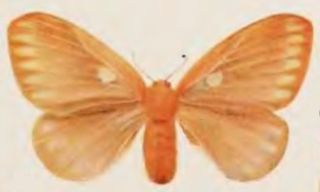Related Research Articles

The sooty oystercatcher is a species of oystercatcher. It is a wading bird endemic to Australia and commonly found on its coastline. It prefers rocky coastlines, but will occasionally live in estuaries. All of its feathers are black. It has a red eye, eye ring and bill, and pink legs.

The sooty thrush is a large thrush endemic to the highlands of Costa Rica and western Panama. It was formerly known as the sooty robin.

The sooty swift is a species of bird in subfamily Cypseloidinae of the swift family Apodidae. It is found in Argentina, Brazil, and Paraguay.

Lasiommata maera, the large wall brown, is a butterfly in the family Nymphalidae.

Seal brown is a hair coat color of horses characterized by a near-black body color; with black points, the mane, tail and legs; but also reddish or tan areas around the eyes, muzzle, behind the elbow and in front of the stifle. The term is not to be confused with "brown", which is used by some breed registries to refer to either a seal brown horse or to a dark bay without the additional characteristics of seal brown.

Junonia orithya is a nymphalid butterfly with many subspecies occurring from Africa, through southern and south-eastern Asia, Cambodia and in Australia. In India, its common English name is the blue pansy, but in southern Africa it is known as the eyed pansy as the name blue pansy refers to Junonia oenone. In Australia, this butterfly is known as the blue argus, but this name also is used for the Aricia anteros in Europe.
Chamanthedon amorpha is a moth of the family Sesiidae. It is found in Mozambique.

Spilosoma alberti is a moth of the family Erebidae. It was described by Walter Rothschild in 1914. It is found on Papua New Guinea, where it is restricted to mountainous areas at high altitudes ranging from 1,200 to 2,150 meters.

Lophocampa hyalinipuncta is a moth in the family Erebidae. It was described by Walter Rothschild in 1909. It is found in Ecuador, Peru and Bolivia.
Pseudaclytia pseudodelphire is a moth in the subfamily Arctiinae. It was described by Rothschild in 1912. It is found in Venezuela.

Spilosoma ignivagans is a moth in the family Erebidae. It was described by Rothschild in 1919. It is found in China (Yunnan).
Elachyophtalma fergussonis is a moth in the family Bombycidae. It was described by Walter Rothschild in 1920. It is found on Fergusson Island.
Elachyophtalma infraluteola is a moth in the family Bombycidae. It was described by Walter Rothschild in 1920. It is found on New Guinea.
Elachyophtalma melanoleuca is a moth in the family Bombycidae. It was described by Walter Rothschild in 1920. It is found on New Guinea.
Strepsinoma aulacodoidalis is a moth in the family Crambidae. It was described by Rothschild in 1915. It is found in New Guinea.
Ambia punctimarginata is a moth in the family Crambidae. It is found in Papua New Guinea.
Cotana bisecta is a moth in the family Eupterotidae. It was described by Walter Rothschild in 1917. It is found in New Guinea.

Cotana rosselliana is a moth in the family Eupterotidae. It was described by Walter Rothschild in 1917. It is found in New Guinea.
Acrojana splendida is a moth in the family Eupterotidae. It was described by Rothschild in 1917. It is found in Ghana and Sierra Leone.
Hemijana variegata is a moth in the family Eupterotidae. It was described by Rothschild in 1917. It is found in Mozambique.
References
- ↑ Rothschild, Lord (1920). "On the genus Elachyophthalma Feld." Novitates Zoologicae. 27 (1): 321–326 – via Biodiversity Heritage Library.
 This article incorporates text from this source, which is in the public domain .
This article incorporates text from this source, which is in the public domain .